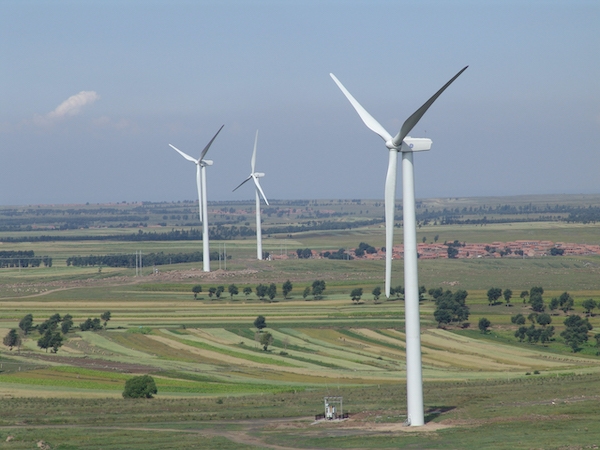The following article was published by Sustainable Brands on 2nd April 2019.
From investors urging fast food chains to cut their emissions to the Swedish teenager rallying schoolchildren to hold strikes across the world, calls for climate action are getting too loud for politicians and business leaders to ignore. As this awakening continues to gather momentum, consumers will inevitably look to brands, as well as governments, to deliver.
But the window of opportunity for action is closing fast: according to latest estimates by the Intergovernmental Panel on Climate Change, the world needs to bring about a net zero economy — by balancing out anthropogenic emissions with the removal of greenhouse gases — by 2050. And we only have until 2030 to reach halfway.
Businesses need to lead from the front to bring about the wholesale change needed to stave off the worst effects of climate change and limit global warming to less than 1.5C.
But what does action look like? And how can a single business — no matter how large — play its part when the stakes are so high and the challenges so huge?
The good news amid all the doom and gloom is that:
While the need for all businesses to become carbon neutral — the term typically used to describe net zero at a company level — is certain, how to reach it has been anything but.
Climate solutions specialists Natural Capital Partners have been tackling this question for over 20 years, and first published The CarbonNeutral Protocol for businesses in 2002, providing a robust framework to enable companies to make credible carbon-neutral statements.
Last year, the company brought together sustainability and business leaders from more than 60 of the world’s biggest firms in seven roundtable events, getting them to talk about their own climate action stories — and to explore different ways businesses can help decarbonise the economy.
The meetings took place in five countries across the US and Europe, and were prompted by a direct call from the United Nations Framework Convention on Climate Change on businesses to offer new views and ideas on how to increase climate ambition in the run up to COP24 in December.
From the discussions, Natural Capital Partners gained a vast cache of invaluable first-hand accounts of climate action in action. The company has distilled the core findings from its research into the following seven ways – outlined in its Imprinting Net Zero model – that businesses can decarbonise their operations and drive the net zero economy forward:
Foot-print, a term no doubt familiar to all readers, concerns a business’s own emissions, either caused directly through its own operations or indirectly through its use of non-renewable energy and motorised transport. Companies can reduce their footprints through a mix of in-house reduction initiatives, purchasing — and generating — renewable energy, and offsetting emissions through low-carbon sustainable development projects.
Microsoft, Marks & Spencer and Fetzer Vineyards are among those that have gone carbon neutral across their operations, working with Natural Capital Partners to achieve their goals. Logitech, in recently taking its primary manufacturing facility in China carbon neutral, is also demonstrating its commitment to climate leadership in the consumer electronics field and in the region.
Tail-print is defined in the model as the reduction of emissions consumed by suppliers in the creation of goods and services used by a company, and refers to what is more commonly considered upstream Scope 3 emissions (but with more emphasis on responsibility!).
One company that stands out for its work in this area is tea and coffee company Bettys & Taylors Group, which has worked with Natural Capital Partners and its suppliers in Africa to start a grassroots programme in the farming communities producing their tea. The initiative involves working with thousands of farmers to plant indigenous trees on their land and teach conservation farming methods.
The cultivation of fruit crops and enhanced farm management practices improves the livelihoods of farmers and helps them both adapt to and mitigate the effects of climate change. The programme has generated verified emissions reductions, which makes its Yorkshire Tea and Taylors Coffee carbon-neutral products, all the way from farm to retail shelf.
Hand-print is the last of the familiar imprints and is a popular focal point for businesses targeting emissions. It refers to emissions consumed downstream by customers through their use of a company’s goods or services.
A good example here is Sky, which produced the world’s first automatic standby mode for its set-top boxes and has increased the energy efficiency of the boxes by over 25 percent. By helping tens of millions of their customers to save energy, the company has had a direct influence in cutting emissions across its customer base.
Brain-print is the first imprint out of the seven that starts to look at going beyond net zero to create a wider system-level impact outside the confines of the business’s usual operations. The model defines brain-print as putting the transformation to a net zero economy at the heart of business strategy, and product and service innovation.
Blue-print is all about how companies identify the right investments, partnerships, governance and technology to turn their biggest goals into concrete plans to help build a net zero economy. Bettys & Taylors Group, for example, commissioned modelling of the climate change that is due to occur before 2050 in the locations of its tea-growing communities. It then committed to an 11-year plan to work with those farmers in the communities to make them more resilient to the changing climate, reducing carbon emissions and improving the livelihoods of farmers along the way.
Finger-print is all about how companies make their sustainability strategy personally relevant to all staff and management in order to inspire them to act — and advocate — outside the workplace.
News-print refers to how companies communicate about climate change to the wider world, making it one of the most exciting and relevant imprints for brands. Every brand needs to act as a climate messenger of sorts, but currently not many companies are assuming that mantle. One company that has, however, is Sky — which has capitalised on its position as a global broadcaster to deliver powerful campaigns such as The Bigger Picture, Rainforest Rescue and Sky Ocean Rescue to vast audiences, cementing its reputation as being at the forefront of environmental issues.
Limiting global warming to 1.5C requires urgent, system-wide change and collaboration across every sector of society; but while the political classes are still trying to find their teeth, business must seize the opportunity to lead from the front. Natural Capital Partners’ seven imprints provide a necessary framework for every company — large or small — to not just start its journey towards carbon neutrality, but to effect a wider, regenerative impact and extend its position as a climate leader.
Read more about Imprinting Net Zero, including more case studies of Natural Capital Partners’ clients at naturalcapitalpartners.com/talanoa.
Decarbonization is crucial to safeguarding the future of our planet, as it ...

We need carbon accounting to quantify and manage greenhouse gas emissions, ...

Carbon neutral and net zero are two terms often used interchangeably, but t...
